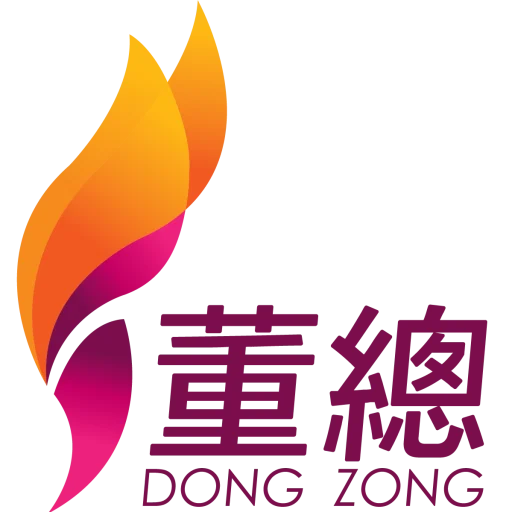Joint Statement Released by Dong Zong and Jiao Zong
November 14, 2020
The recent written reply made by the Senior Minister of Education Dr Mohd Radzi MD Jidin at the House of Representatives in parliament stating that “The enrollment of non-Chinese students in Chinese vernacular schools saw a rising trend in 2020 compared to 2010 (within a decade); however, the percentage of enrollment of Chinese students in Chinese vernacular schools showed a decrease from 88.16 percent in 2010 to 80.25 percent in 2020 (some 8 percent decline)” has in actual fact misled the general public as he did not make further clarification and it will be taken Chinese parents have stopped sending their children to vernacular Chinese schools. In response to this and the pursuit of the truth, Dong Zong and Jiao Zong herewith refutes and clarifies as follows:
1. Dong Jiao Zong understands that the national population census indicates a common decline in fertility rate for all ethnic groups but more serious for ethnic Chinese and the fertility rate for Malay and Bumiputera shows a rising trend (Table 1). Attributed to the low fertility rate, less Chinese enrollment in vernacular Chinese primary schools will be the inevitable consequence. In actual fact, due to the decline in fertility rate for all ethnic groups, national primary and vernacular Tamil primary schools face similar predicament. Fortunately, there is an overall raise in national primary school enrollment these couple of years due to the raise of fertility rate of Malay and Bumiputera (Table 2).
Table 1: Comparison of Fertility Rate for All Ethnic Groups (Year 2000, 2010 and 2015)
| Year |
Ethnic Malay and Bumiputera |
Ethnic Chinese |
Ethnic Indian |
| 2000 |
3.5 |
2.6 |
2.5 |
| 2010 |
2.6 |
1.5 |
1.7 |
| 2015 |
2.7 |
1.4 |
1.4 |
Source: Department of Statistics Malaysia
Table 2: Comparison of Student Population for All Vernacular Primary Schools (Year 2010, 2015 and 2020)
| Year |
National Primary |
SMJK Chinese |
SMJK Tamil |
| 2010 |
2,184,918 |
603,192 |
104,654 |
| 2015 |
2,033,478 |
548,079 |
85,371 |
| 2020 |
2,131,178 |
509,589 |
80,729 |
Source: Ministry of Education (preschools student population excluded)
2. Compared to the past, though there was an enrollment decline in Chinese students, Chinese parents send their children to vernacular Chinese primary schools on the whole. According to the MOE statistics, as of 2011, as high as 96 percent Chinese students enrolled at vernacular Chinese primary schools. For the past few years, no relevant statistics on this matter was released by the MOE. However, relevant materials reveal that even though some Chinese parents got their children enroll at private institution and international schools, conservative estimate shows 90 percent Chinese parents sent their children to vernacular Chinese primary schools for fundamental education. Meanwhile, the education system of vernacular Chinese primary schools has attracted the attention of non-Chinese parents and thus a growing number of non-Chinese parents are sending their children to vernacular Chinese primary schools. As such, in the situation where there is a decline in Chinese student enrollment and a raise in non-Chinese student enrollment, the binary figures released within the ten years will be marked in presentation. But this does not translate Chinese parents stop sending their children to vernacular Chinese primary schools and we believe this point should be clarified lest misunderstanding may ensue.
3. The statistics revealed by the MOE show in year 2010, non-Chinese students stood at 11.84 percent in the total population of vernacular Chinese primary schools; yet in 2020, the percentage of non-Chinese students raised to 19.75 percent. That indicates attributed to the increase enrollment of non-Chinese students, the percentage of Chinese students declined to 80.25 percent in year 2020 from 88.16 percent in 2010. Using the figures provided by the MOE, the tabulated statistics of both non-Chinese and Chinese students in vernacular Chinese primary schools nationwide in year 2010 and 2020 will be as follows:
| Students |
2010 |
2020 |
Plus/Minus |
| Ethnic Chinese |
531,774 (88.16%) |
408,945 (80.25%) |
-122,829 |
| Non-Chinese |
71,418 (11.84%) |
100,644 (19.75%) |
+29,226 |
| Total |
603,192 (100%) |
509,589 (100%) |
-93,603 |
4. Dong Jiao Zong concludes from the MOE statistics that vernacular Chinese primary schools are the most sought-after schools among all other vernacular schools in the country. This not only assures vernacular Chinese schools are well accepted and recognised by other ethnic groups in the country, but also confirms that vernacular Chinese primary schools are multiracial schools thus children from all ethnic groups can learn together happily; rather, they do not belie national integrity but promote realisation and understanding in this multiracial country. The intentional smear alleging vernacular Chinese primary schools of compromising national integrity and harmony will collapse and fall apart instantaneously.
On this note, Dong Jiao Zong strongly believes multi-stream education system is both our country’s unique characteristic and advantage and it is the responsibility of the government to preserve the inherent system and set its enhancement as the common goal of the nation so that all students from differenrt ethnic groups can equally enjoy national education resources.
5. Nonetheless, we should be aware of the competitions and challenges brought forward by the mushrooming private and international schools. Particularly since 2012, the intake approval of international schools in the country has attracted well off parents to send their children to the schools. As a matter of fact, the statistics released by the MOE show the popularity of international schools as their total population exceeds that of private schools by two times.
The statistics from the MOE also reveals that in year 2017, the total enrollment of private primary and international schools (foreign students included) is 36,063 and the number grew to 43,546 in 2019. Yet the statistics do not show detailed subtitles like ethnic groups and foreigners, hence the exact number of students from each ethnic group is unknown. But from all accounts and accessible materials, we noticed that ethnic Chinese stood the highest number in overall private and international school enrollment. This figure cautions the challenges lying ahead for vernacular Chinese primary schools intaking mainly Chinese students.
Notwithstanding costly school fees, there is an accelerating momentum for financially well-off parents to send their children to international schools. The reason is their wish to send their children to English speaking schools in general and their despair in national education system in particular, including the over-exam-based and rigid learning model. Worse still, the education policy is inconsistent and left the parents in limbo thus generates indignation. Inevitably, for the sake of providing a better and destressing learning milieu for their children to learn happily and integrally as well as heading for holistic development, they made a choice.
6. Dong Jiao Zong understands that attributed to the large-scale decline of fertility rate of ethnic Chinese, decline in vernacular Chinese primary school enrollment is the inevitable consequence. To sustain the stable advancement of vernacular Chinese primary school, the imminence is to ensure Chinese parents send their children to the schools. In the face of the booming growth of international schools, to stay as the priority choice for Chinese parents, vernacular Chinese school operators need to work harder and reform responsive to the times to promote their educational quality; put simply, to advance with the times and to build their unique school culture. We believe, this is what needs to be accomplished through the efforts put into by both Chinese education educators and Chinese community throughout.

